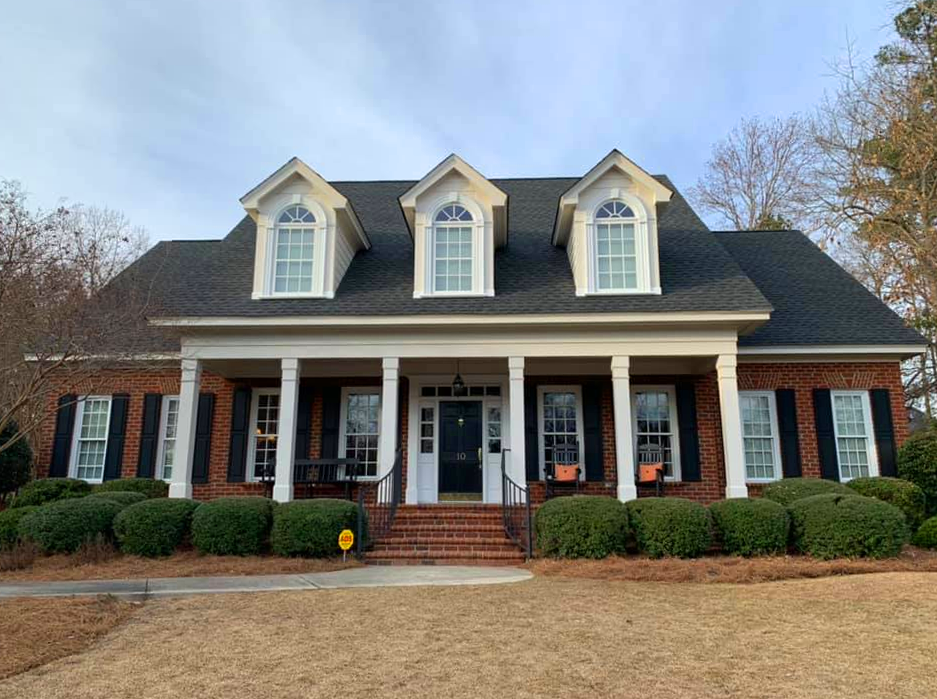
Why Roofing Quality Matters in South Carolina – Avoid Common Roof Problems
Introduction
In South Carolina, your roof faces a lot — hot summers, heavy rain, high humidity, and the occasional tropical storm. A poorly built or aging roof can quickly become a major source of leaks, mold, and costly damage.
If you’re a homeowner in Lexington SC or the surrounding area, understanding why roofing quality matters is key to protecting your biggest investment. This article breaks down the most common roof problems in South Carolina and shows you how choosing the right materials, contractor, and maintenance plan can save you thousands in the long run.
The Importance of a Quality Roof
Your roof isn’t just a finishing touch — it’s the first line of defense against the elements. A high-quality roof:
Keeps water out and prevents structural damage
Improves energy efficiency by keeping your home cooler in summer
Withstands wind and storm impact better
Extends the life of your entire home exterior
Low-quality installation or cheap materials often lead to premature failure, meaning you pay more over time for repairs and replacements.
Common Roof Problems in South Carolina
Before we talk about solutions, here are the most frequent issues Lexington homeowners face due to climate and installation shortcuts.
Leaks and Water Intrusion – Caused by poor flashing, missing shingles, or improper sealing.
Storm Damage – High winds can lift shingles or damage roof decking.
Mold and Mildew Growth – Humidity encourages algae streaking and mold growth, which can damage shingles.
Poor Ventilation – Leads to high attic temperatures, ice dams in winter, and shortened shingle life.
Premature Shingle Failure – Cheap materials or improper installation can lead to curling, cracking, or granule loss.
How to Avoid These Roof Problems
Here’s how to make sure your roof stands up to South Carolina’s climate and protects your home for decades.
1. Choose High-Quality Materials
Opt for roofing materials rated for high wind resistance and moisture protection. Architectural asphalt shingles or metal roofing are excellent choices for Lexington homeowners looking for durability.
2. Hire a Licensed, Experienced Contractor
Quality installation is just as important as quality materials. Work with a contractor who understands local building codes, proper flashing techniques, and manufacturer specifications.
3. Ensure Proper Ventilation and Insulation
A good roof system includes proper attic ventilation and insulation to prevent heat buildup and moisture problems. Ask your contractor to evaluate your attic as part of the project.
4. Schedule Regular Inspections
South Carolina’s weather can be tough on roofs. Annual inspections can catch small issues — like loose shingles or damaged flashing — before they become expensive repairs.
5. Invest in Preventive Maintenance
Simple actions like cleaning gutters, removing debris, and addressing algae growth can extend your roof’s lifespan and keep it looking good.
Frequently Asked Questions
How often should I replace my roof in South Carolina?
Most asphalt shingle roofs last 20–25 years, but high-quality installations with premium shingles can last longer. Metal roofs can last 40–50 years.
Does humidity really affect roof life?
Yes. Humidity can encourage algae growth and wood rot, which weaken your roof structure and materials over time.
Are roof repairs covered by insurance?
Storm-related damage is often covered, but wear and tear from age is typically not. Check your policy and keep up with regular maintenance to avoid claim issues.
What’s the best roof type for South Carolina’s climate?
Architectural asphalt shingles are a popular choice due to their durability and affordability. Metal roofs are excellent for longevity and heat reflection.
Can I stay in my home during a roof replacement?
Yes. Roof replacement is noisy but does not require you to leave your home unless structural repairs make it unsafe.
Conclusion
Your roof is one of the most important parts of your home — and cutting corners on materials or installation can lead to costly, avoidable problems. By investing in quality roofing, working with a trusted contractor, and keeping up with inspections and maintenance, you’ll protect your home, improve its efficiency, and save money over time.